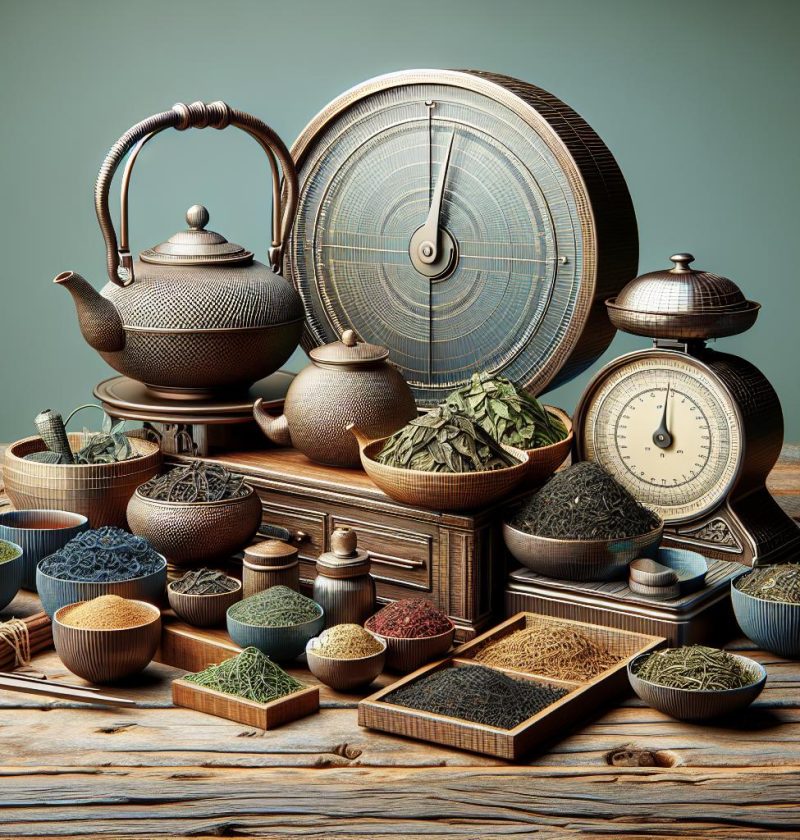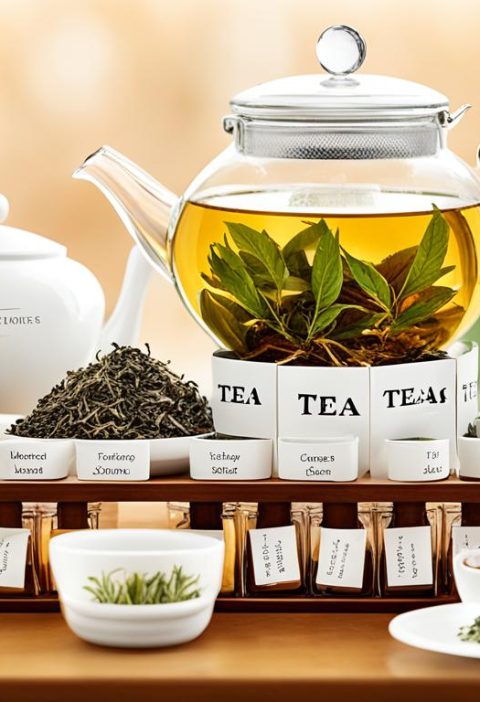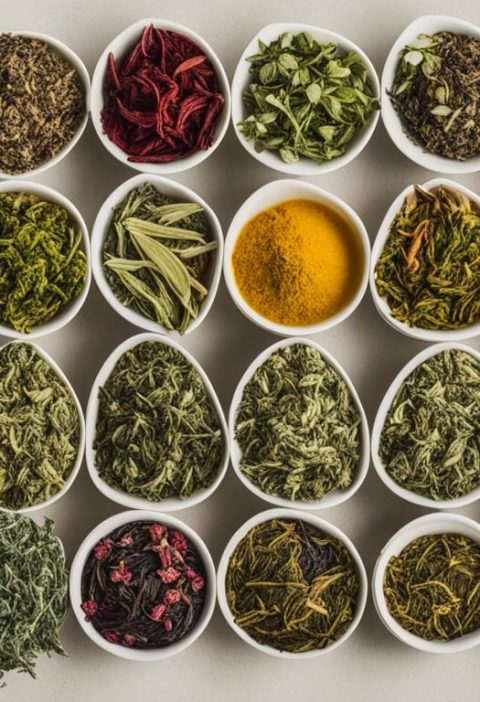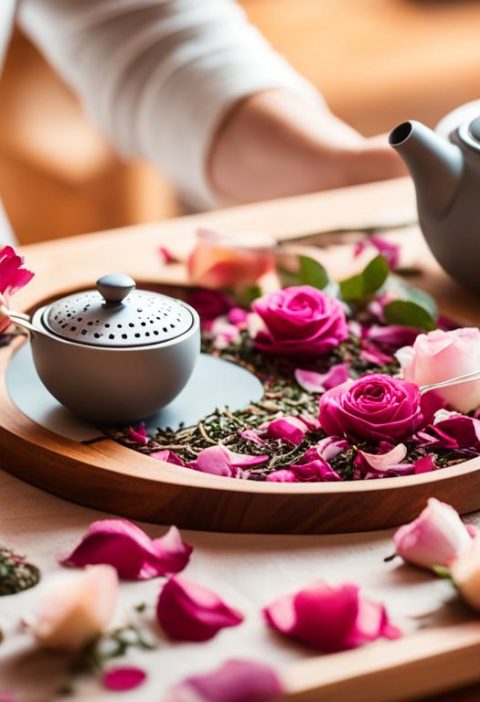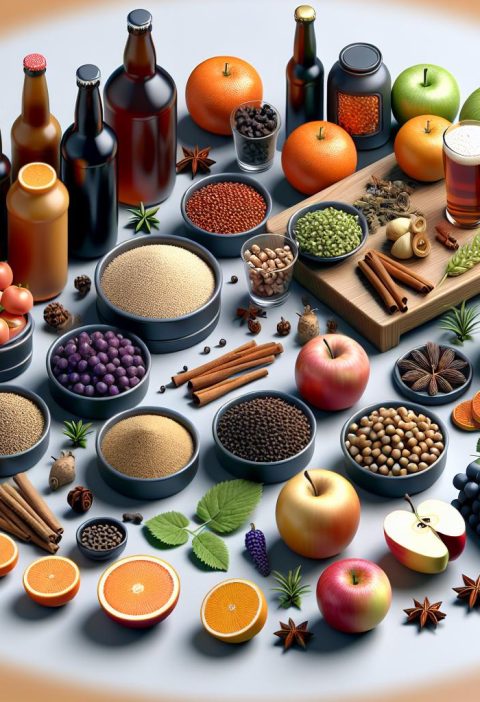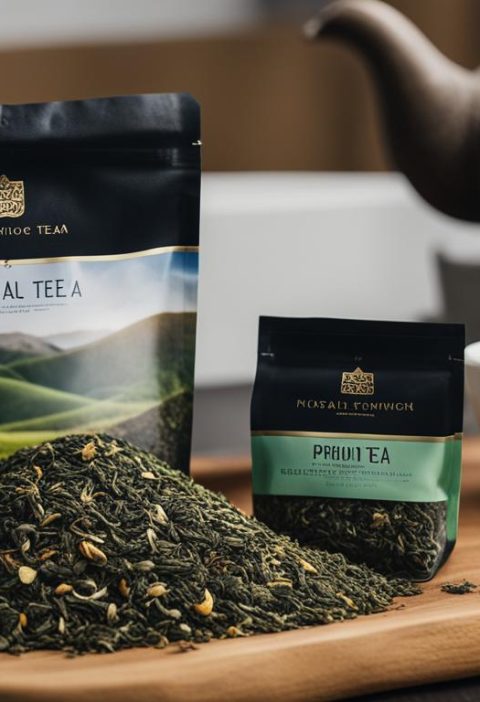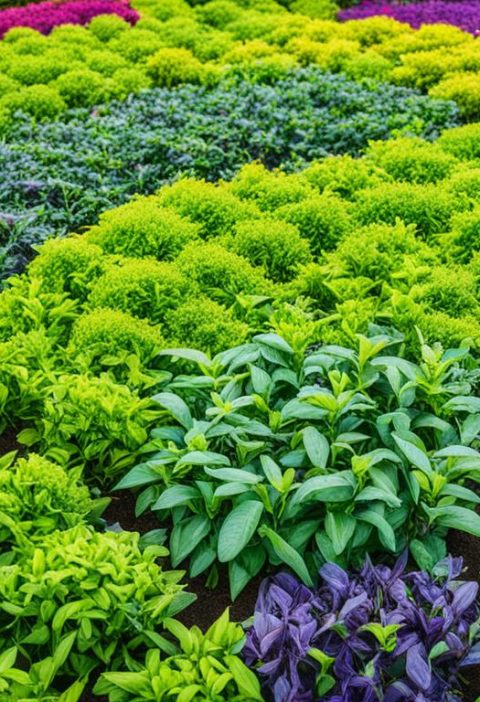So, we’re diving into the fascinating world of tea flavor exploration through proper steeping techniques. Whether you’re a seasoned tea enthusiast or just starting to appreciate the complexities of a good cuppa, mastering the art of steeping can elevate your tea-drinking experience to new heights. From delicate white teas to robust black teas, each variety holds a unique flavor profile waiting to be unlocked through the right brewing method.
When it comes to tea, the steeping process is where the magic truly happens. By understanding the optimal water temperature, steeping time, and tea-to-water ratio for different types of tea, we can coax out the full spectrum of flavors and aromas hidden within each leaf. Join us on this journey as we delve into the nuances of steeping techniques that will help you savor every sip and appreciate the true essence of your favorite teas.
Understanding the Basics of Tea Steeping
Tea steeping is a fundamental aspect of tea preparation that greatly influences the flavor and aroma of your brew. Whether you are just starting or have some experience with tea, mastering the basics of tea steeping is crucial for a delightful tea-drinking experience.
For Beginners: Mastering the Fundamentals
- Start by selecting the right type of tea based on your preferences.
- Use fresh, filtered water to avoid any unwanted flavors in your tea.
- Follow recommended steeping times and temperatures for different types of tea:
- Black Tea: 3-5 minutes at 200-212°F
- Green Tea: 1-3 minutes at 160-180°F
- Herbal Tea: 5-7 minutes at 212°F
For Intermediate Tea Enthusiasts: Enhancing Your Brew
- Experiment with adjusting steeping times to find your preferred strength.
- Explore tea-to-water ratios for a more personalized cup:
- Standard Ratio: 1 teaspoon of tea per 8 ounces of water
- Stronger Brew: Increase tea amount or steeping time
- Weaker Brew: Decrease tea amount or steeping time
- Pay attention to the quality of your water – water makes up 99% of your tea.
- Consider investing in a temperature-controlled kettle for precision brewing.
- Elevate your tea experience by experimenting with multiple infusions for certain teas, like oolong and pu-erh.
Tea steeping is both an art and a science, offering a sensory journey with each cup. By understanding these foundational principles, we can unlock the full potential of our favorite teas and indulge in a world of diverse flavors and aromas that tea has to offer.
Exploring Different Tea Varieties and Their Flavor Profiles
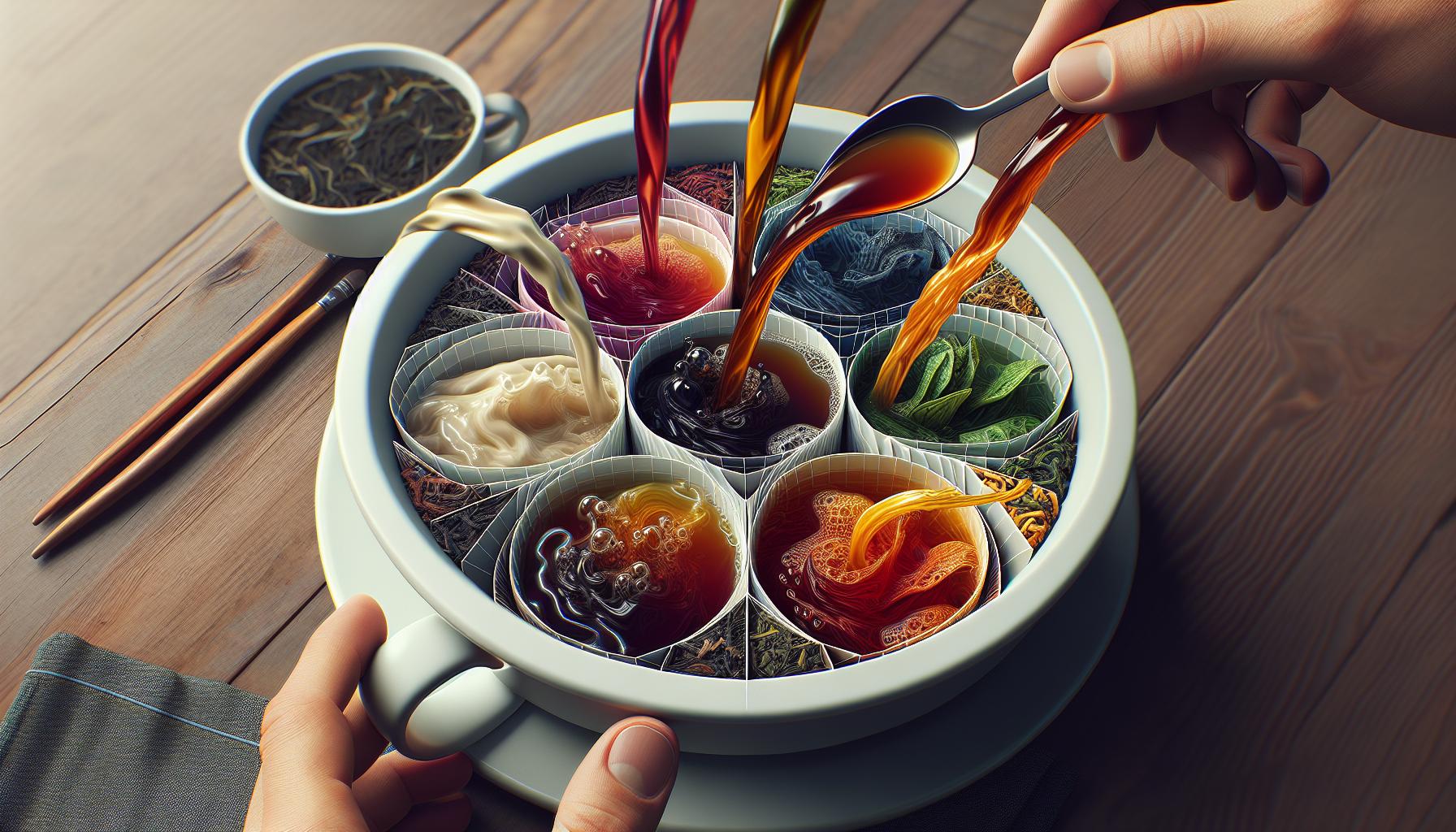
For Beginners: Understanding the Basics
Select a tea that suits your preference – green, black, oolong, or herbal. Ensure freshness by storing tea properly.
Know the water temperature and steeping time for each type. Here’s a breakdown:
- Green Tea: Steep at around 160-180°F for 2-3 minutes.
- Black Tea: Brew at 200-212°F for 3-5 minutes.
- Oolong Tea: Steep between 180-205°F for 3-5 minutes.
- Herbal Tea: Infuse at 205°F for 5-7 minutes.
For Intermediate Enthusiasts: Customizing Your Brew
Experiment with different steeping times and tea-to-water ratios to adjust strength. Embrace variations for a personalized experience.
Consider investing in a temperature-controlled kettle for accuracy. It ensures optimal water temperature for each tea type.
For Experts: Advanced Techniques and Beyond
Explore multiple infusions for teas like oolong and pu-erh. Each brew unveils diverse flavor layers and complexities.
Master the art of tea blending. Combine different teas to create unique flavor profiles. This allows for endless creativity and exploration.
| Tea Type | Water Temperature | Steeping Time |
|---|---|---|
| Green Tea | 160-180°F | 2-3 minutes |
| Black Tea | 200-212°F | 3-5 minutes |
| Oolong Tea | 180-205°F | 3-5 minutes |
| Herbal Tea | 205°F | 5-7 minutes |
Mastering the Art of Temperature Control
For Beginners: Getting Started
- Start by investing in a basic thermometer to monitor water temperature accurately.
- Use water that’s just below boiling for black and herbal teas, and slightly cooler water for green teas.
- Allow the water to cool down for a few minutes after boiling for oolong teas.
For Intermediate Enthusiasts: Fine-Tuning the Brew
- Consider upgrading to a temperature-controlled kettle for precise heat adjustments.
- Experiment with varying temperatures within the recommended range for each tea type.
- Keep in mind that different tea leaves require different temperatures for optimal flavor extraction.
- Explore the impact of temperature on tea solubility to enhance flavors and aromas.
- Try specialty brewing methods like gongfu cha that involve precise temperature management.
- Understand that subtle temperature adjustments can drastically change the taste profile of high-quality teas.
| Facts & Tips | Data |
|---|---|
| Ideal water temperature for black tea | 205°F (96°C) |
| Recommended temperature for green tea | 175°F (79°C) |
| Optimal temperature range for oolong tea | 185-205°F (85-96°C) |
| Suggested water temperature for herbal tea | 205°F (96°C) |
Perfecting the Steeping Time for Optimal Flavor Extraction
When it comes to extracting the best flavors from your tea, mastering the steeping time is crucial. Whether you’re a novice or seasoned tea enthusiast, adjusting the steeping time can make a world of difference in the taste and aroma of your brew. Let’s dive into some tailored recommendations based on your experience level:
For Beginners: Mastering the Basics
- Start by following the recommended steeping times on tea packaging.
- Generally, delicate teas like green and white teas require shorter steeping times (1-3 minutes).
- Bolder teas such as black and herbal teas can steep for longer periods (3-5 minutes).
- Use a timer to ensure consistency and avoid bitterness from oversteeping.
For Intermediate Enthusiasts: Enhancing Your Brew
- Experiment with slightly adjusting the steeping time to fine-tune flavors based on personal preference.
- Consider a tea timer app or device for more precision.
- Understand that increasing steeping time intensifies flavor but may also lead to bitterness.
- Keep notes on your brewing experiments to track the optimal steeping times for different teas.
- Dive deeper into the world of tea by exploring multiple short steeps for complex teas like oolong or pu-erh.
- Try grandpa-style brewing for a unique and nuanced tea experience.
- Explore cold brewing techniques for certain teas to extract different flavor profiles.
- Embrace the art of multiple infusions to discover the evolving flavors of high-quality teas.
Achieving the Ideal Tea-to-Water Ratio

For Beginners: Mastering the Basics
- Start with the recommended tea-to-water ratio on the packaging.
- Use a kitchen scale to measure if unsure.
- Typically, one teaspoon of loose tea per 8 ounces of water is a good starting point.
For Intermediate Tea Enthusiasts: Enhancing Flavors
- Experiment with varying ratios to suit your taste preferences.
- Try increasing or decreasing the amount of tea leaves for a stronger or milder brew.
- A slightly stronger ratio can bring out more flavors in some teas.
- Delve into the world of gong fu brewing with precise ratios.
- Consider tea types when adjusting ratios for different flavors.
- Some teas, like green tea, may require lower ratios for a delicate taste.
| Tea-To-Water Ratio for Beginners | 1 tsp of tea per 8 oz of water |
|---|---|
| Tea-To-Water Ratio for Experts | Consider tea type for ratios |
Conclusion
In our tea flavor exploration journey, we’ve uncovered the essential role of the tea-to-water ratio in brewing the perfect cup. From beginners to advanced enthusiasts, understanding and adjusting ratios can unlock a world of diverse flavors. By following recommended ratios or daring to experiment, we can elevate our tea experience to new heights. Remember, each tea type has its unique characteristics, influencing the ideal ratio for a delightful taste. Embrace the art of steeping with precision, and let your taste buds savor the rich complexities of a well-brewed cup of tea. Cheers to endless possibilities in the world of tea!
